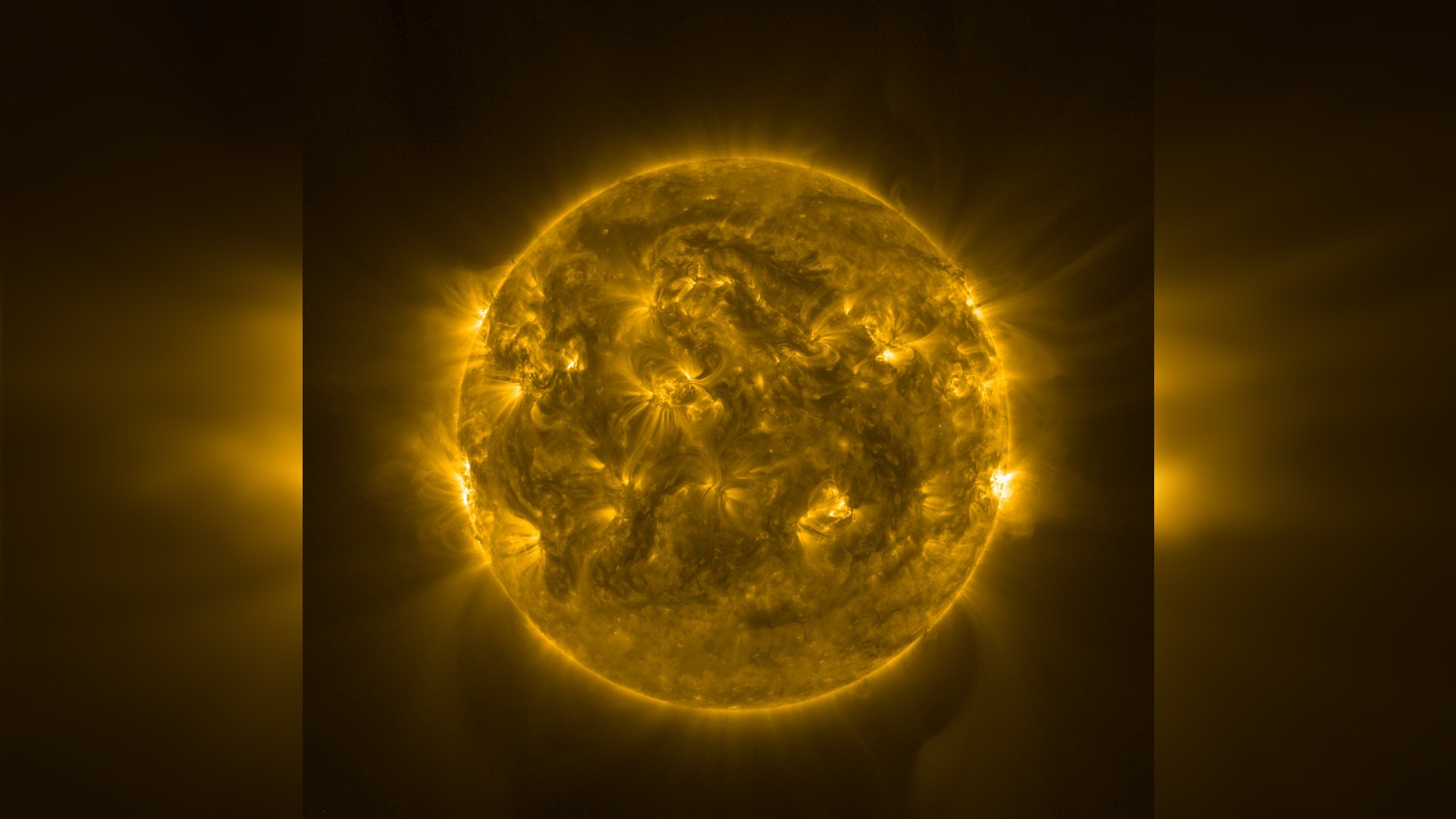
A new visualization from the European Space Agency (ESA) shows activity ramping up on the sun's surface as it approaches solar maximum this year.
Every 11 years or so, the sun experiences a peak in activity known as solar maximum, due to its strong and constantly shifting magnetic fields. During this period of the solar cycle, the frequency and intensity of sunspots on the solar surface increases.
Using images taken by the Extreme Ultraviolet Imager (EUI) instrument on ESA's Solar Orbiter, astronomers compiled a visualization that shows how the sun has changed between February 2021 and October 2023.
Related: Solar maximum will arrive sooner and last longer than previously expected, say scientists
"As the sun approaches the maximum in its magnetic activity cycle, we see more brilliant explosions, dark sunspots, loops of plasma and swirls of super-hot gas," ESA officials said in a description of the newly released solar visualization.
Currently, we are in solar cycle 25, which is expected to peak in mid- to late 2024 — one year earlier than previous estimates. The most recent solar minimum, when the sun is least active, occurred in December 2019, just two months before Solar Orbiter launched.

"At the beginning of this cycle (the solar minimum) there is relatively little activity and few sunspots," ESA officials said in the description. "Activity steadily increases until it peaks (the solar maximum) and then decreases again to a minimum."
Earlier Solar Orbiter views, seen on the left of the visualization's slider image, show that the sun was still relatively calm in February 2021 compared to the heightened activity captured during a close approach of the sun in October 2023.
Solar cycle 25 has been full of activity, including strong solar flares and coronal mass ejections. These powerful solar storms can affect Earth's electric power grids, GPS and satellites and, in some cases, cause radio blackouts.
Following the solar maximum, the sun's magnetic poles flip, causing the sun to grow quiet again during a solar minimum. The Solar Orbiter spacecraft can help scientists predict the timing and strength of solar cycles; however, researchers won't know that the sun has reached its maximum until a decrease in the number of sunspots is observed.







